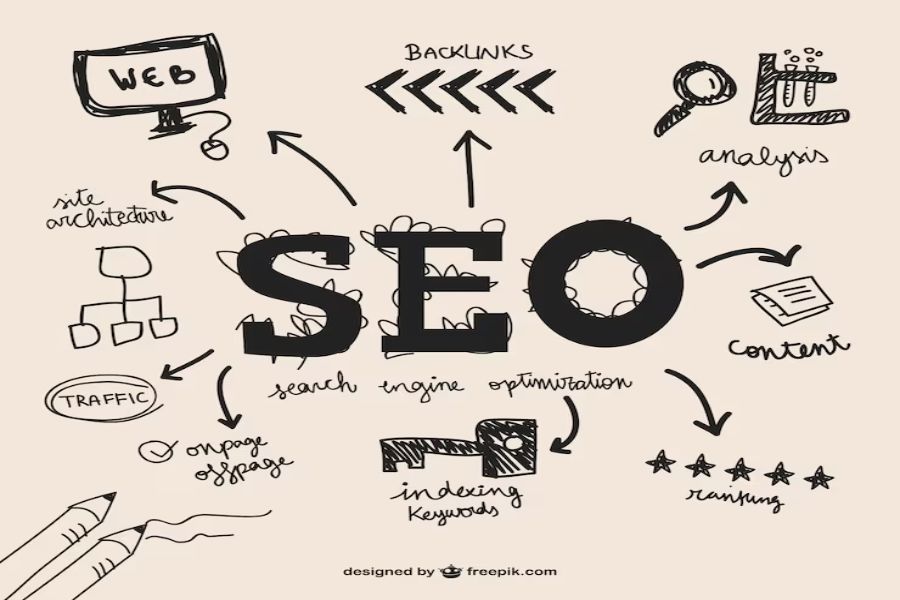Proven Content Strategy For SEO Success: Boost Your Rankings Quickly

Nobody ranks their website on search engines by luck. Instead, it’s always a solid content strategy at the backend that supports faster success online, along with other necessary factors. And if you are missing it on your website, this article can be an excellent read for you.
Wondering how? Well, it can help you figure out how to strategize your content efforts to get the desired SEO results. Whether your goal is to just bring traffic or convert incoming visitors into successful buyers, this strategy is equally beneficial for you.
So, are you ready to set off on a highly informative journey? Let’s get started.
Begin With Comprehensive Keyword Research
Remember, it’s always the proper keyword research that gives you a blueprint for a successful SEO content strategy. So, take the first step by identifying highly relevant search terms that you want to rank for. For this purpose, you can either start with a suitable seed keyword or simply examine the gap between your competitors’ and your website’s content coverage.
This will help you determine which search terms you are not targeting yet and need immediate attention. However, make sure that you only choose the ones with low competition at the start.
Over time, when you have built enough topical authority, you can go after high-volume and more competitive keywords.
Do Topical Mapping To Build Content Clusters
Once you have collected keyword data, the next step is to do effective topical mapping. Why? Because this practice enables you to organize topics in a way that contributes to building topical authority by creating strong clusters. As a result, search engines consider your site an expert in that subject area and reward it with a higher ranking.
Therefore, figure out what your main topic is and then branch it into related topics, taking the researched keywords into account. Then, plan how you would connect all the subtopics with the central topic. This way, each piece of content supports the others while still pointing back to the pillar topic, which is a great SEO approach.
Start Creating Content With Proper Planning
After you have finalized the topics and mapped them together, it finally comes to creating people-first content. But before starting to write, doing comprehensive research on each topic must be part of your SEO content strategy. Plus, you must be well aware of what exactly your audience intends to find against a search query.
This means you would have to dive into a deeper topic and reader research to come up with a better content creation plan. When you already know the existing knowledge gaps and the preferences of potential visitors, you can give them what’s missing elsewhere. This keeps them longer on your site, which positively influences your rankings.
Prioritize Search Intent And EEAT Standards
Google no longer supports generic information, fluff, or filler details. Instead, it wants everyone to create EEAT and intent-focused content that offers true value. So, if you want your website content to rank and catch the maximum number of eyes, your strategy must align with these modern requirements. Otherwise, your time and effort may be in vain.
So, whether it’s a blog post, article, guide, or any other web material, you must meet user intent. Also, especially in informational pieces, prefer sharing first-hand experience, real examples, research-backed evidence, and authentic and original insights. Together, these things make your content more trustworthy, authoritative, and worth ranking.
Optimize Content For Key On-Page Elements
Another essential part of planning winning content is on-page optimization. Whether it’s service page content, a product description, or a blog post, optimize every piece for key on-page factors. These usually include the right keyword placement, content structuring, writing click-driven meta titles and descriptions, internal linking, and external linking.
But apart from them, you must also pay attention to image optimization. No matter whether it’s a single picture or more, tag them with alt-text, compress their size for higher speed, place them smartly, and do proper image file naming. When both your text and images are well-optimized, the content doesn’t just rank in text-based searches but also in visual search results.
Focus On Providing A Great Reading Experience
Good readability is not a direct ranking factor, but it plays a significant role in improving the one that truly matters: user experience. The more readable your content is, the better the reader’s journey. And if visitors feel satisfied and spend more time on your pages, it directly signals to Google that your site deserves to appear before more relevant searchers.
That’s why, give your content an organized structure, use simple wording, avoid fluff, and prevent redundancy. Additionally, detect and fix grammatical errors, simplify sentences, and add bullets or lists where appropriate.
By doing so, you actually improve the overall reading experience, which significantly contributes to SEO success.
Don’t Compromise Content Originality Ever
Many people try to take shortcuts to rank faster, but end up compromising the originality of their content. As a result, their rankings drop instead of improving. Search engines prioritize and reward authentic, original content, so duplicating or unethically rewording existing material can severely harm your visibility.
To avoid this, focus on creating content based on your own knowledge, creativity, and thorough research. However, even if you write everything yourself, never assume your work is completely unique. Always perform a final plagiarism check to confirm your content’s originality.
The most reliable way to ensure this is by using a trustworthy plagiarism checker. The tool scans your text against billions of online sources, academic papers, and published articles to identify any potential similarities. It helps you maintain originality, improve credibility, and avoid unintentional plagiarism.
When your text passes the scan without being flagged, you can be confident that it’s fully original and ready to perform well in search rankings.
Track Key Metrics & Adjust Your Strategy
Remember, a successful content strategy for higher rankings should always be adjustable. Why? Because it often happens when the initial plan does not bring the expected results. Here, tracking the performance of existing material and making the right adjustments to the strategy can significantly help to see desired outcomes.
So, keep a firm eye on key success metrics of content like CTR, traffic, dwell time, bounce rate, engagement rate, and conversions. This approach will help you understand exactly where your current content lacks and what needs to be changed. Consequently, you reset the roadmap to ensure that your efforts go in the right direction.
Wrapping It Up
In a nutshell, you can’t even think about getting higher positions in search results if you don’t work on a strong SEO content strategy. And the good thing is that creating the right plan for content creation is not as difficult as it seems. Instead, you just need the right directions that are mentioned above in this guide. From talking about where exactly to start to making the right adjustments to your strategy if it doesn’t work well, we have tried to cover everything effectively. Now, we hope that you are capable enough to create a powerful content roadmap for your website to enjoy continuous SEO success.
